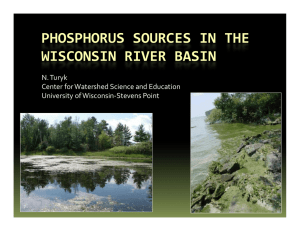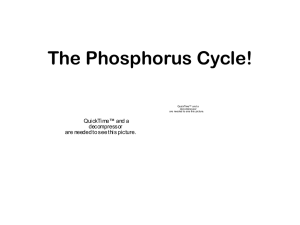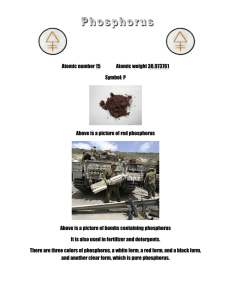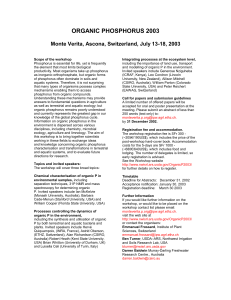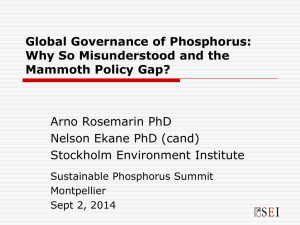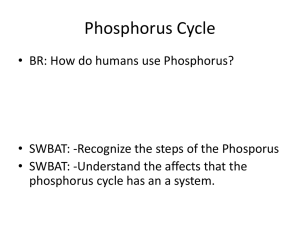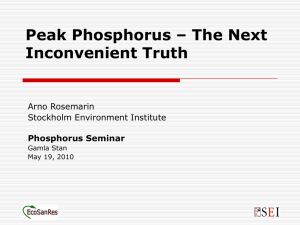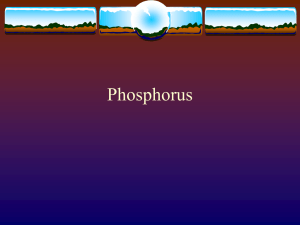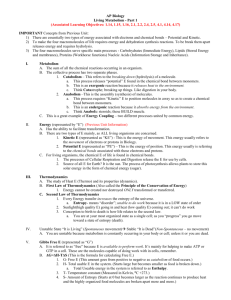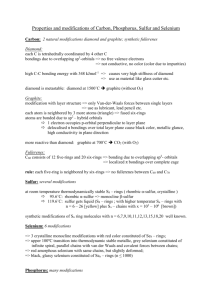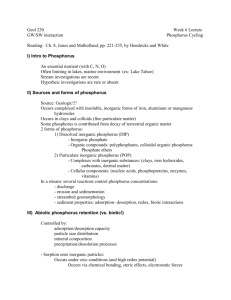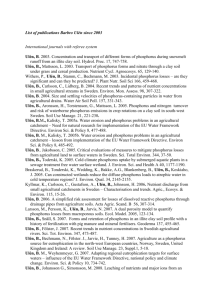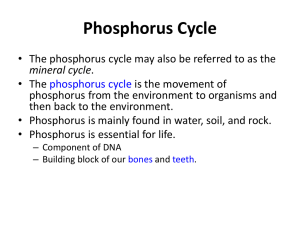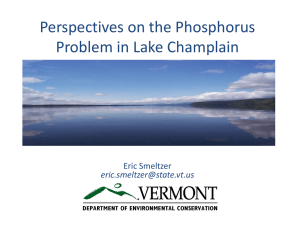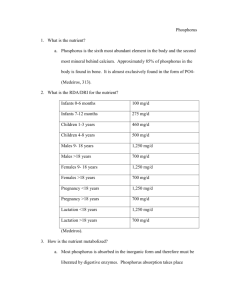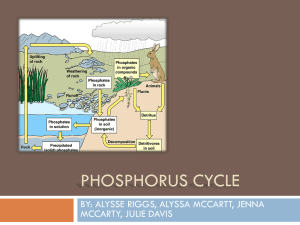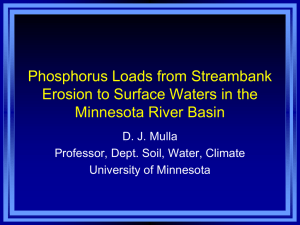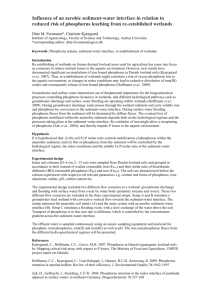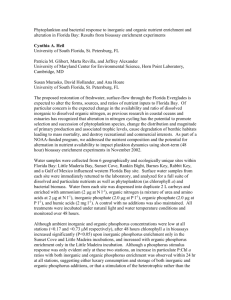Phosphorus & Water Cycle
advertisement
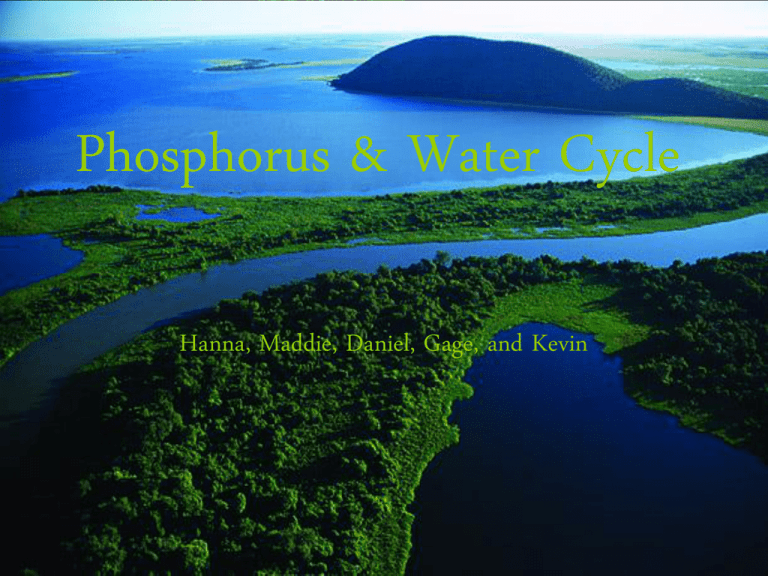
Phosphorus & Water Cycle Hanna, Maddie, Daniel, Gage, and Kevin Phosphorus Phosphorus Cycle • Found in the bottom of the ocean. • It is mined to be used as fertilizer and detergents. • Phosphorus also goes into the rocks and is brought up by weathering. Then it is dissolved in soil water, lakes, and rivers. Phosphorus Cycle continued • The phosphorus in the fertilizer gets into land food webs, and it cycles through the food webs and water systems. • There is leeching and run off to the ocean where it is dissolved and cycles through the marine food webs. Organic and Inorganic Reservoirs of Phosphorus • Phosphate is found in soil, plants and in microbes in a number of organic and inorganic compounds. • It is believed that all original phosphates came from weathering of rocks. • The chief source of organic phosphorus compounds entering the soil is the vast quantity of vegetation that undergoes decay. Phosphorus in Chemical Reactions • Phosphate groups activate and deactivate enzymes within cells that catalyze major chemical reactions. Impact of human intervention on the Phosphorus Cycle • Humans introduce phosphorus through a number of sources: human wastes, animal wastes, industrial wastes, and human disturbance of the land and its vegetation. • When this additional phosphorus enters the system, plants respond by excessive plant growth. Water Cycle Water Cycle • Found all over the world. • Life would not be possible without water. • Earth has a limited amount of water so it has to cycle it. Water Cycle continued • The water has to be evaporated into the atmosphere. • In the atmosphere it condenses into clouds. • From the clouds the water will fall as precipitation such as rain, snow, hail, and sleet. • After the water falls back to earth, it will run off mountain and other land features to collect in lakes, streams, and the oceans. How we Affect the Water Cycle • We interfere with the water cycle by taking away huge amounts of freshwater and depleting other water supplies. • By clearing vegetation from land to build roads, parking lots, etc., water cannot seep into the ground to be stored in the aquifer. • The water remains on the surface and increases the likelihood of flash floods and surface run-off. • This can cause soil run-off and damages buildings. Reservoirs of Water • Organic: Animals, plants, etc. • Inorganic: lakes, glaciers, oceans, aquifers, etc. The End We hope you enjoyed learning about the Phosphorus and Water Cycle.
